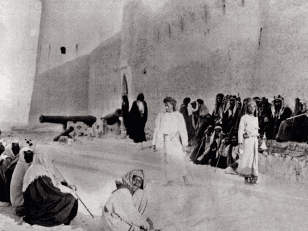The story of Abu Dhabi’s transformation from a sparsely populated coastal emirate in the Arabian Gulf into a thriving, multicultural, globally renowned hub, owes a debt of gratitude to the late Sheikh Zayed bin Sultan Al Nahyan and his ability to bring disparate tribes and people together to achieve progress.
In his book The Desert Falcon, Claud Morris quotes British diplomat Colonel Sir John Boustead to describe the effect that Sheikh Zayed had on people: “I was amazed by the crowd that was always around Sheikh Zayed, showing him great respect and attention, even while he was participating with them in digging and building wells to irrigate groves, or sitting humbly among them. Truly, he was a democratic leader, a national figure, and a tribesman who was highly willing to shoulder the responsibilities of his office.”
Sheikh Zayed was appointed the Ruler’s Representative in the Eastern Region – Al Ain, in 1946, when he was 29 years old. At that time, Al Ain lacked wealth and resources, not least the water necessary for agriculture. Sheikh Zayed found solutions to these problems, bringing water to Al Ain and ensuring it was used to irrigate land. He also built Al Ain’s first school, hospital and covered market.
As a result, he quickly gained the people's respect. In 1966, Sheikh Zayed was appointed Ruler of Abu Dhabi.
Abu Dhabi produced significant quantities of oil for export in the 1960s, but its prosperity cannot be attributed solely to oil-generated wealth. Key to its early transformation was Sheikh Zayed’s ability to strategise short, medium and long-term goals that would serve the people of Abu Dhabi and ensure the government was able to precisely implement these plans.

In September 1966, a month after becoming Ruler of Abu Dhabi, Sheikh Zayed formed the Abu Dhabi Planning Council to oversee several crucial large-scale development strategies that would accelerate the speed of Abu Dhabi’s evolution into a global centre of business and tourism. His vision also saw the transformation of the emirate’s education, healthcare, agriculture and physical infrastructure systems, and the strengthening of its defence and food security, through the oversight of specialised government departments.
Sheikh Zayed’s method of governance centred around regular majlises which were open to all, and where everyone who spoke was heard. The majlises ensured social cohesion, fostered economic reform and saw the voice and will of the people directly influencing decisions relating to policy. It was a practice that featured prominently during Sheikh Zayed’s time as the Ruler’s Representative in Al Ain and continued when he became Ruler of Abu Dhabi.
The thriving economy Abu Dhabi enjoys today has its foundations in reforms discussed at Sheikh Zayed’s majlises and his unwavering belief in putting people first. It is a philosophy of leadership that endures to this day and is the abiding gift of his legacy.
The late Sheikh Zayed bin Sultan Al Nahyan
Father of the Nation
A diverse and globally connected emirate, Abu Dhabi is the federal capital of the United Arab Emirates (UAE). Home to more than 200 nationalities, Abu Dhabi is a growing global financial centre, a thriving innovation hub, a leading energy producer, and a world-class tourist destination and cultural hub.
Learn MoreAbu Dhabi Government strives to ensure the emirate is one of the best places in the world to live, work, invest, visit and study.
Learn More